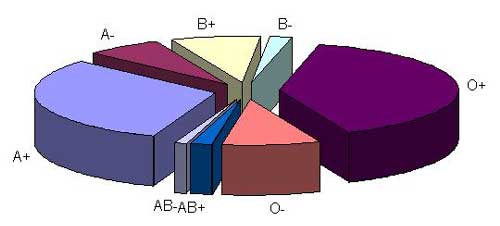
|
Blood is a fluid that transports oxygen and nutrients to the cells of animals and carries away waste products. In many animal species, blood also carries hormones and disease-fighting substances. Humans are complex multicellular organisms and the average adult human has about five litres of blood.
Blood left at a crime scene is a valuable clue in solving crime. Blood collected at a crime scene is sent to a laboratory for identification. Every person has one of 4 basic blood types: A, B, AB or O. Each blood type may then have a further classification, positive or negative. As you can see from the table, blood type O is very common. A blood test can help identify a possible suspect, but might not absolutely identify the suspect as they may be one of many with that blood type. Finding an AB blood type is useful as it eliminates many suspects.
The blood type percentages shown in the table above are for the Australian population. These relative frequencies do change with different racial groups throughout the world. Antibodies and antigensAntibodies and antigens play an important part in identifying blood.
Blood samples can easily be found at a crime scene and collected. If the blood covered material can be removed from the crime scene it is clearly labelled and then taken away to be tested. If the blood covered materials cannot be moved, then a swab can be used to collect the blood.
Large blood samples can be analysed by a simple test like the one you are about to do here! Once the blood type of a sample has been determined it can be used to eliminate a suspect or include them as a possibility. Note that a blood test does not match the blood, just the blood type.
By using a chemical called luminol, blood that is not visible to our eyes can be seen.
|






